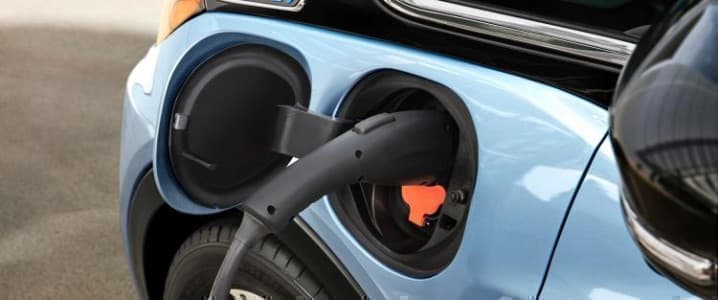Back in 2014, the Ford Motor Company mesmerized the world when it revealed it had 3D printed the engine cover for the all-new Ford Mustang, marking the earliest instances of practical industrial use of the esoteric printing technology.
The giant auto manufacturer took this a step further when it started using 3D printing to quickly produce prototypes for different parts such as cylinder heads, intake manifolds and air vents thus shaving months off the development time for individual components.
And now, 3D printing is doing its magic in the electric vehicle industry, too.
The sector is about to get a big shot in the arm after a small 3D printing firm has been able to solve one of the sector’s byzantine manufacturing challenges: producing cheaper and more efficient copper parts and components. Watertown, Massachusetts.-based Markforged Inc. has unveiled the Metal X system that’s capable of printing industrial parts made of pure copper–an industry first.
Markforged says the breakthrough will help to reduce production and supply costs and will boost the efficiency of EV motors.
Cost and Efficiency Gains
Copper is a major component in EVs where it’s used in electric motors, batteries, wiring in charging stations and inverters. Copper is also used in welding tips and heat sinks.
To get an idea of how much copper goes into a single EV, consider that a pure EV can contain more than a mile of copper in the wiring in its stator windings alone. A conventional gas-powered car contains on average 18 to 49 lbs. of the element; a standard battery-powered EV contains 183 lbs while a fully electrical bus would need 814 lbs as per the Visual Capitalist.
Copper is a great choice for EVs because it’s nearly as conductive as silver–the most conductive metal– but far cheaper at $0.16/oz vs. $17.67/oz for silver. Unfortunately, the very feature that makes it great for electrical wiring is the same reason why it renders itself poorly to 3D printing: excellent heat conductivity. Copper reflects light so well that it essentially also reflects away much of the energy from the traditional laser-based process necessary to mold parts. Related: Oil Rig Count Inches Higher As Prices Stabilize
Markforged’s Metal X system gets around this challenge by wrapping the copper in plastic and shooting it out like a tiny glue gun to build the component layer by layer. This way, only the plastic is melted and not the copper. The newly formed mold is then placed in a furnace to get rid of all the plastic while the remaining copper sinters together.
Cited by Forbes, Greg Mark, CEO and founder of Markforged, heralded 3D printing as the breakthrough that makes it possible to create smaller, more complex, high tolerance parts for less money.
In other words, manufacturers would not need to maintain massive stockpiles to keep pace, for starters, or seek third-party suppliers. Instead, carmakers can print their own copper welding shanks (for spot-welding vehicle body parts), and seriously cut down on costs. That’s a huge deal considering that Mark estimates the average manufacturer usually has $1 million in spare shanks stockpiled for this reason.
Using Metal X technology, manufacturers can make smaller, tighter, more compact weld shanks they can use to weld into tighter spaces in the car, meaning you can use less spot welds or make more rigid frames, which is great for performance cars.
Mark also told Forbes that 3D printing was a pathway to higher energy density and greater efficiency.
So, what kind of cost savings are we talking about here?
It turns out they are quite impressive. According to Mark, one unnamed manufacturer has conducted several thousand test-welds using the Metal X system and reported a 12-fold reduction in lead times and lowered component costs by a factor of 6x.
With electric vehicles struggling to achieve cost parity with their ICE brethren, every savings count, making the Markforged innovation a significant breakthrough. McKinsey has reported that EVs often cost $12,000 more to produce than comparable ICE vehicles making them unattractive for OEMs and hampering electrification efforts.
Source: McKinsey & Co.
3D Printing an Industrial Success
For the average consumer, 3D printing is a fad that died faster than netbooks, E-book readers and fingerless gloves. Sure, 3D printing toys for your kids like Hasbro, chocolate like Hershey’s or even football cleats like Nike sounds cool and quite thrilling. Related: Shale Gas Drillers Are Facing A Perfect Storm
But the harsh reality is that 3D printing is a complex, laborious and time-consuming process not designed for the average user, not to mention that not many people would fancy ponying up $1,000-plus for a clunky industrial machine. The potential applications are rather narrow in scope for the everyday consumer to make it worth the trouble.
It’s the key reason why erstwhile high-flying 3D cult stocks such as 3D Systems (NYSE:DDD), Stratasys (NASDAQ:SSYS), Voxeljet (NYSE:VJET) and ExOne (NASDAQ:XONE) have undergone peak-to-trough declines in excess of 70% over the past five years. Mass market indifference simply killed these stocks.
But that’s not to say that 3D printing is a dying technology–far from it.
The concept of building a three-dimensional object from a computer-aided design model has found a ready niche in the manufacturing sector. Additive manufacturing is already helping to speed up the design and development process of EVs, with juicy cost reductions to boot. All 3DP has reported that thanks to 3D printing, Hong Kong-based design firm XEV has designed an EV it has dubbed LSEV that costs just $7,500. The eye-popping cost reductions have been realized due to cutting out inventory, tooling and assembly line costs. Everything in the car apart from the chassis, windows, tires and seats has been 3D printed.
General Motors has partnered with Autodesk Inc. to produce lightweight 3D-printed parts for its alternative-fuel vehicles. Wonder why Tesla Inc. has not given the technology serious thought.
By Alex Kimani for Oilprice.com
More Top Reads From Oilprice.com:














